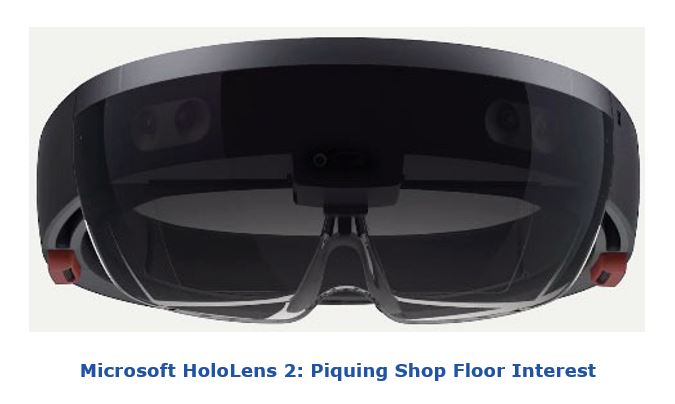

As today’s industrial maintenance organizations are becoming more sophisticated and operating under more stringent service-level agreements and expectations, their maintenance teams continue on a quest to be more efficient and effective. To this point, awareness and interest in EAM wearables are building, and advancements in EAM design offer new opportunities to meld the two technologies.
These tools can be particularly valuable in such areas as maintenance inspections, diagnostics, job plans, and repair instructions. They can be particularly useful in visualizing and confirming steps recommended when undertaking various tasks. They can also decrease inspection time and assist in detecting errors.
These capabilities allow EAM systems to incorporate the use of wearables to display relevant information at the point of repair using such tools as mobile devices, smart glasses, augmented, mixed, and virtual reality headsets and head-mounted displays, voice-activated headphones, smart watches and wristware, and other wearables variations.
Smart glasses and similar variants can display detailed asset information and instructions on-site, sometimes via a heads-up or head-mounted displays. These displays can show instructions, display schematics, show illustrated pictures and images, and allow communication with a maintenance supervisor or remote subject matter expert via Bluetooth, GPS, and Wi-Fi.
Smart watches and wristware from Apple, Samsung, and others, which are typically connected to users’ smartphones, can offer more features than simply displaying e-mail messages and handling calls. In addition to displaying a wide variety of information, they can be equipped with sensors that can monitor and send alerts about workers and their surrounding environment.
Voice-activated headphones with embedded microphones can add efficiencies to jobs as well. For example, work that once might have required two people – one to make repairs while the other read instructions and write down and document work done – can be converted to voice commands conveyed to a technician’s headphones, who then verbally reports the repair status. From there, the voice commands can then be automatically converted into data, and then stored for use in the underlying EAM system.
Some innovative organizations are using smart glass displays to help technicians who may not know or remember specific repair procedures. In addition to showing recommended procedures, video and audio collaboration can be used to consult subject matter exerts at remote locations, and sessions can be recorded for future use.
In some cases, high-definition displays like Microsoft’s HoloLens 2 offer a rich, and sometimes immersive, experience that can display text and intricate details on high-resolution 3D images and holograms in the users’ field of view.

In addition to Microsoft, devices and software solutions from suppliers like Epson, Librestream, RealWare, Vuzix, and others are being used in industrial settings. These devices are also customizable, so task-specific solutions are possible.
Note: If you are interested in more information on wearables in EAM and other markets, please let us know, as we are considering expanding our research in this area. Feel free to contact the author, Ed O’Brien, at eobrien@arcweb.com or at (781) 471-1129 with your thoughts and suggestions.

